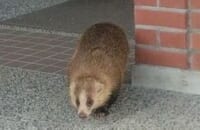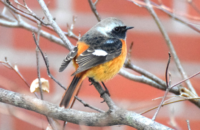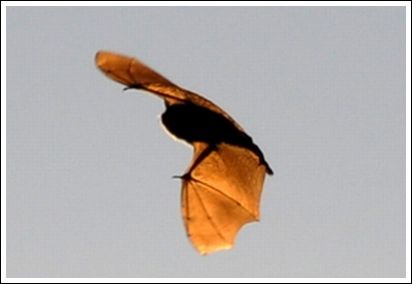 岩倉川でよくみかける動物と言えば、カワムツ、 ドンコ、ヨシノボリ(魚類)、カルガモ、セグロセキレイ、コサギ、アオサギ(鳥類)、アオダイショウ、シマヘビ(爬虫類)などですが、哺乳類で言えばコウモリです。現在、地球上の哺乳類の1/4がコウモリの仲間と言われています。
岩倉川でよくみかける動物と言えば、カワムツ、 ドンコ、ヨシノボリ(魚類)、カルガモ、セグロセキレイ、コサギ、アオサギ(鳥類)、アオダイショウ、シマヘビ(爬虫類)などですが、哺乳類で言えばコウモリです。現在、地球上の哺乳類の1/4がコウモリの仲間と言われています。
写真のコウモリは小型のアブラコウモリ(Pipistrellus abramus)。夕方になると岩倉川付近でヒラヒラと飛びまわっています。視覚より超音波で周囲のようすを探ります。
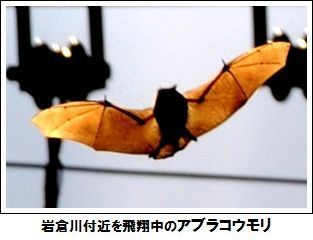 コウモリは、鳥の羽とはことなり、私たちの指と指の間に膜(飛膜)をつけたような身体をしています。翼に見えるのはいわば「手のひら」ですから、膜の中の黒い筋は指の骨なのです(親指は上に突き出ている)。
コウモリは、鳥の羽とはことなり、私たちの指と指の間に膜(飛膜)をつけたような身体をしています。翼に見えるのはいわば「手のひら」ですから、膜の中の黒い筋は指の骨なのです(親指は上に突き出ている)。
よく「コウモリは逆さで生活していて頭に血が上らないの?」と疑問にもつ人もいますが、もともと血液量が少なく、また血管にも網目状の工夫があるようです。
みなさんの家の近くの川でも、夕方ヒラヒラと”黒い飛翔物”がいたら、私たちのなかま哺乳類のコウモリかも知れません。
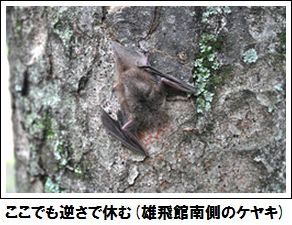 While we see many animals along the Iwakura River, such as fish, birds, and reptiles, we can also see mammals such as bats. Bats make up 1/4 of the mammals in the world.
While we see many animals along the Iwakura River, such as fish, birds, and reptiles, we can also see mammals such as bats. Bats make up 1/4 of the mammals in the world.
In the photos, you can see Japanese House Bats.
They can be seen flying around the Iwakura River in the evening, where they use ultrasonic waves instead of their sight to search their surroundings.
Unlike birds, bats have a membrane between their fingers that looks like wings, but is actually their hands, so the black lines in the membrane are bones, (with a thumb sticking out).
People often wonder if the blood doesn’t go to their heads when they hang upside down, but they don’t have much blood, and their veins are built to protect them.
If you see something black flying near a river by your house, it might be a mammal just like you.

